A car company that builds incredibly good diesel cars that are both really fast and really fuel efficient goes ahead and builds a hybrid car with a big engine. This is the BMW ActiveHybrid 3, which features the second-generation BMW hybrid system, and we’ve driven it in Munich.
The BMW ActiveHybrid 3 is essentially built on the F30 335i. Like the 335i, you can have it in either Modern Line, Sport Line or Luxury Line trim, though for the Malaysian-spec – when it is eventually launched – we’ll have to see what Cyberjaya has decided what we’ll be getting.
In terms of exterior differences, other than the unique blue colour you see here (which you don’t have to take, btw), various ActiveHybrid 3 badges around the car as well as funky looking aerodynamic ‘Streamline” wheels (which you also don’t have to take in Europe, but probably have to in Malaysia), there’s not much else to differentiate it from a regular 335i.
Some car manufacturers like Nissan and Toyota use a blue-tinged variation of their marque logo, but that’s probably against the holy grail of BMW CI guidelines, or perhaps there’s already enough blue on the propeller badge to begin with.
Two exhaust pipes on both sides of the rear bumper proudly exhibit the car’s sporty intentions – BMW has made no attempt to hide the fact that this car does produce emissions! And the exhaust tone is pretty bassy as well – in fact, I heard more of the exhaust tone than the engine while driving this car, something that I’m undecided as to whether I like or not.
As for the interior, it’s pretty much stock standard F30, except for a few badges here and there and additional customised displays to show the status of the hybrid system on both the Black Panel instrument cluster and the iDrive display.
Other than that, there’s really not much to tell you that you’re sitting in a hybrid. And for those who like to be reminded everyday that they’re driving something that can run on EV mode, it might be a negative point. For those who like their cars to make a statement, there might not be enough hybrid-ness about the way this car looks and drives to satisfy.
If you think about it from a positive note, it’s a good problem to have, really, that the switch between pure electric and combustion engine drive is so smooth that if you don’t pay attention to the hybrid displays and the RPM meter, you won’t really know what’s going on. The motor is integrated seamlessly into the car.
Yes, the motor. BMW’s second generation ActiveHybrid technology is standardised across all hybrid models, to simplify things and reduce cost as well. This is why the new 7-Series facelift has its engine downgraded from a V8 to an inline-6. The same engine, motor and gearbox package you get in the ActiveHybrid 3, you’ll also get in the 5 and the 7.
You start with a BMW TwinPower Turbo 6 cylinder single twin-scroll turbo engine from the 335i, the N55B30 producing 306 hp at 5,800 rpm and 400 Nm between 1,200 and 5,000 rpm. Then you add an electric motor that outputs 55 hp and its full torque of 210 Nm from standstill. It’s not as simple as 306 + 55 however – total system output is rated at 340 hp.
The new 55 hp electric motor can propel the car on its own at speeds up to 75 km/h, and as far as four kilometres if you keep an average speed of about 35 km/h. It’s installed in the housing of the eight-speed automatic transmission, sandwiched between the engine and the transmission.
The electric motor is powered by a 317V high-voltage circuit that’s supplied by a lithium-ion battery installed in a special high strength housing, positioned between the wheel arches in the boot. This battery consists of a total of 96 cells of the A123 iron phosphate type, which is said to be safer, with a downside of not being the most powerful on the market.
The battery, which BMW engineered themselves, has an effective energy capacity of 675 Wh. BMW engineered the hybrid system to use only 50% of battery capacity, so the lifespan of the battery can be extended, which is claimed to last “the life of the vehicle.” The car also has a conventional 14V circuit to power everything else.
This high-voltage circuit also powers a special electrical air-conditioning system that’s necessary for it to function with the combustion engine turned off, as a regular air- conditioning system depends on the engine crankshaft for power. The air-conditioning can be activated remotely via the diamond button on the BMW key fob, which normally turns on the headlamps on a regular F30.
Switching to electric air-conditioning allows the start-stop system to shut the engine down in far more situations than a normal BMW with a start-stop system. For example, the system can completely shut off and decouple the engine from the gearbox while coasting at speeds of up to 160 km/h in ECO PRO mode.
The battery has affected the weight balance of the car by a wee bit – it’s now a 49.8:50.2 front to rear weight balance. Despite the higher 340 hp total system output, BMW says one would probably feel the same performance as a 335i because of an additional 135 kg of weight. In terms of dynamics, you’ll probably feel the extra weight in situations like braking into a corner, but at the same time this will be compensated by a slightly stronger acceleration, thanks to the electric motor providing some torque boost.
Boot space is reduced because of the battery, but only by a small margin. It now measures about 390 litres, which is a reduction of 90 litres compared to a regular F30. In fact, you’ll hardly notice that it’s there, as all that’s changed is that the ActiveHybrid 3’s boot floor is now completely level, compared to the normal F30 which has a boot floor that slopes downwards from the seat back towards the rear. The total difference in height at the rear of the boot is about 50 mm.
In terms of safety, BMW says it is safe – crash tests did not reveal any issues and the company has even tried crashing the battery separately from the car, and there weren’t any problems. It’s obvious that the F30 was engineered from the very beginning to be able to carry a hybrid power train, given its seamless integration into the car.
So, what’s the point of all this, really? BMW claims a double digit percentage improvement in fuel economy over a 335i. The car is rated to consume just 5.9 litres per 100 km and output 139g of CO2/km in the EU test cycle. We set out to see if we could achieve those numbers.
In our real world test drive in the outskirts of Munich, we observed average fuel consumption of between 7.8 litres per 100 km to 12.1 litres per 100 km. The hybrid power train performed best during moderate traffic, where there was plenty of stop and go and with most of the go only hitting speeds of 60 km/h tops.
In this driving pattern, which reminded me a lot of my commute to work from Bukit Jelutong to Petaling Jaya, I observed that from the various displays that the car would run on EV mode most of the time, as long as you feathered the throttle and drove reasonably fuel efficient. The stop and go sections allowed the battery to recharge, so more EV travel would be possible.
The hybrid power train curiously did not perform very well in heavy stop and go traffic, which reminded me of Friday afternoon jams back home, nor did it do very good in open roads. These situations caused the average fuel consumption swelled to well over 10 litres per 100 km, and it was hard to get the car to run on EV mode.
For the latter, it’s generally known that hybrids don’t do very well on highways because of the lack of opportunity for brake energy regeneration. It’s also probably something to do with the high speeds required to be maintained, to avoid annoying people on the highways in Germany.
As mentioned earlier, transition between the various modes was completely seamless. You can hear the six-cylinder engine restart, but you sure can’t feel it. No jerks, no vibration, no excessive crank time, nothing. It just comes alive, does its job, and when it isn’t needed, goes back to sleep. And the only way you could tell other than the iDrive and instrument cluster displays is the exhaust note that comes in when the engine is running.
Smoothness aside, coming from someone who used to drive an F10 520d for nearly two years and whose company fleet now includes a wicked red F30 320d, the fuel consumption figures I managed to get weren’t exactly impressive. The 520d averaged about 7.5 litres per 100 km with mixed driving (including hard driving), and only had to be refueled twice a month. And this was the model without the ECO PRO mode!
Harvinder’s F30 320d now does nearly 900 km from RM100 of fuel. And it’s violently fast in Sports mode, a real joy to drive at night when the roads are clear. So, unlike hybrids from a different segment like the Toyota Prius, which can easily do south of 5 litres per 100 km on average, what was the big deal about the BMW ActiveHybrid 3?
I suppose the formula used is completely different here than cars like the Prius. Efforts to make a Prius fuel efficient goes all the way, down to using an Atkinson cycle engine. The ActiveHybrid 3 was obviously designed first as a performance BMW with a powerful turbocharged engine, and a hybrid as a secondary consideration. It was built to take advantage of certain incentives that governments around the world give to hybrid cars. And it’s for people who completely insist on avoiding diesel engines.
Everything that you’ll love about a normal 3-Series can be found in the ActiveHybrid 3. It drives pretty much like a 335i on public roads. The efforts of trying to squeeze out better fuel efficiency via the integration of the hybrid system probably won’t be felt except by the most sensitive of drivers, and the limit of the dynamic capabilities of the car will probably remain out of reach by most average drivers. Not everyone who buys a 3-Series has the skill to push it to the limits of traction and handling, but what they are looking for is the sporty driving experience that they will get regardless.
We stopped by BMW’s four-cylinder headquarters in Munich to meet up with the project leader for the ActiveHybrid 3 before embarking on our test drive journey. I asked him what were the criteria that BMW looked at before deciding to build an ActiveHybrid model out of an existing car, and he explained that there were various reasons.
Firstly, an ActiveHybrid model has to be one that can be accepted worldwide. This means you’re not likely to see a wagon-bodied ActiveHybrid, as those only work in Europe. You also probably won’t see a diesel ActiveHybrid, for the same reasons.
Why not an ActiveHybrid system built around the N20 family 2.0 litre four cylinder petrol TwinPower Turbo engine then, as Audi and Volkswagen did with their 2.0 litre TFSI? The reasoning given was that there wasn’t enough of an incentive to slap on an electric motor on a small engine, as the benefits are amplified the larger of a displacement you go. A small engine is already more efficient, and the minimal improvements by going the hybrid path wouldn’t justify the additional costs involved.
It’s clear that BMW and Audi engineers come from two completely different engineering schools – they had a disagreement in the press over cylinder deactivation technology recently as well.
There’s also the case of getting the engine to restart smoothly – apparently, it’s easier to do this on the six-cylinder, as we observed from the fantastic results, but it couldn’t be done on a four-cylinder. I concur on this – I tried out the X3 xDrive20i recently and wasn’t really impressed with auto start-stop system.
And the most important reason why ActiveHybrid 3 cars exist is to adapt to the changing regulations in most developed countries. In some countries, the tax system is making cars like the 335i very expensive to buy and own, so an ActiveHybrid 3’s ability to deliver better results on driving cycle tests can make the car more affordable to own, hence displacing the 335i as the top-of-the-line performance F30.
Unfortunately, there’s no major incentive here in Malaysia to get an ActiveHybrid 3 over a 335i, unless you like the idea of owning a hybrid and enjoying the occasional EV mode drive as a lifestyle choice. But there’s no financial incentive to be had here – if you want to spend less on fuel, get a diesel.
It would make some financial sense to buy one if the ActiveHybrid 3 enjoyed some import and excise tax relief in Malaysia. Then, it can be priced at a more reasonable price tag than the current stratospheric price tag of the 335i, which puts a giant gap between it and the 328i.
The Malaysian government’s hybrid tax breaks, however, only apply to hybrid cars with engines smaller than 2.0 litres in displacement, so without these incentives the ActiveHybrid 3 with its 3.0 litre engine won’t end up being more affordable than a 335i – it’s likely to cost more!
From what we have been informed, BMW Malaysia is appealing for incentives, but there is nothing positive to announce so far. If no tax breaks are successfully negotiated, we are told that BMW Malaysia will go ahead and launch both the F30 ActiveHybrid 3 and the F10 ActiveHybrid 5 anyway, at whatever price they will have to price it at. It will probably serve as a showcase of BMW technology at the showrooms, like a halo model.
Now, if there are some tax breaks given and the ActiveHybrid 3 ends up being priced within the first half of the huge RM200k gap between the 328i and the 335i, then that’s a completely different story! If that happens, we’ll be looking at six-cylinder power being reasonably affordable in the F30 range again. Which is really the whole point of the ActiveHybrid 3 existing in other countries as well. That would be a nice thing to happen, wouldn’t it?
Look after the jump for a big gallery of the ActiveHybrid 3.
Looking to sell your car? Sell it with Carro.

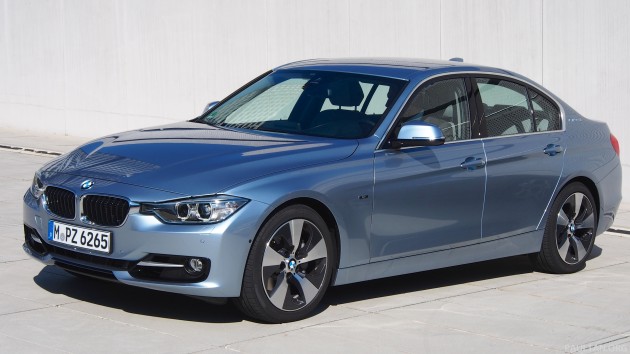
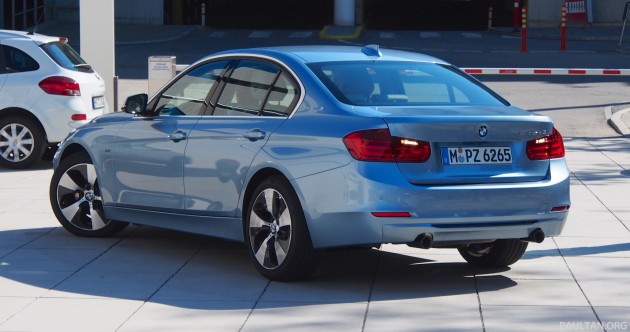
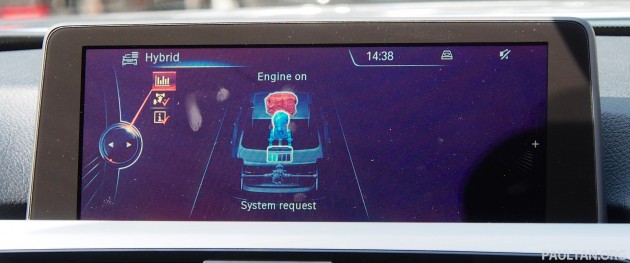
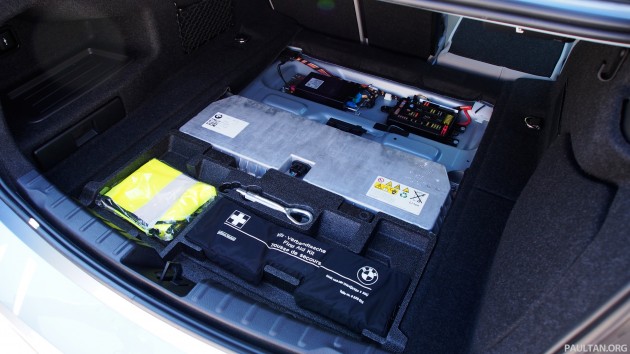
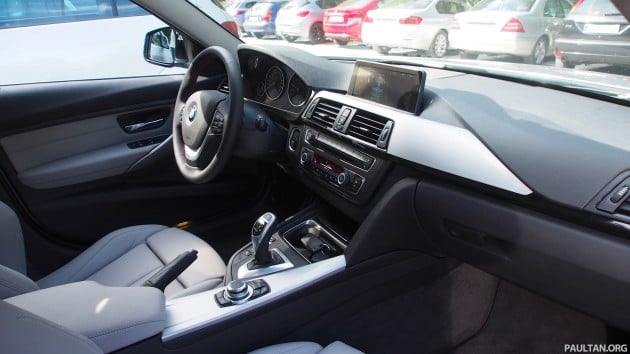
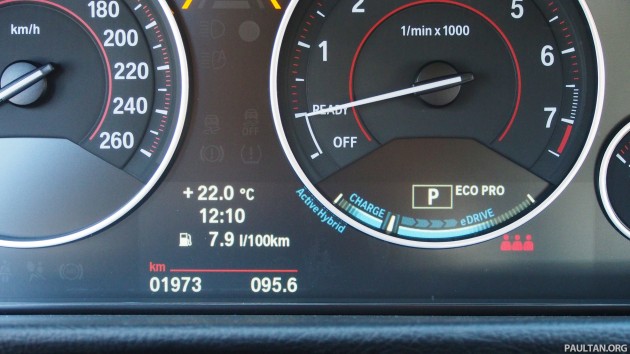
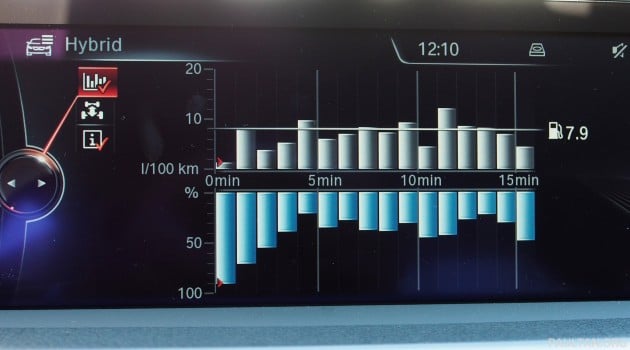
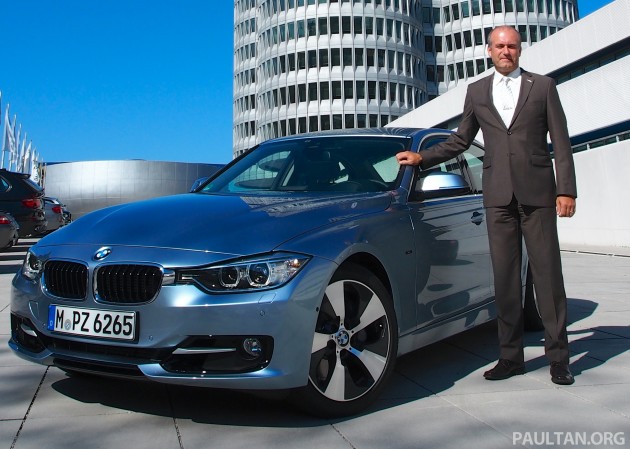
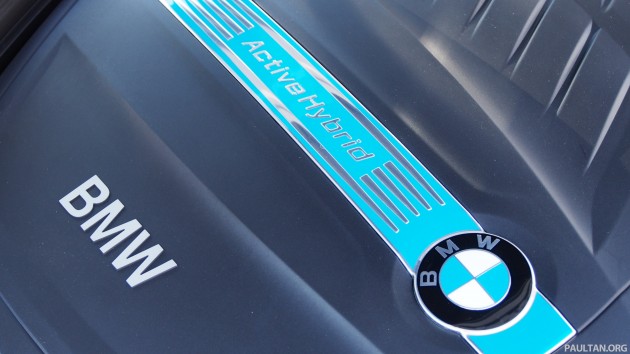
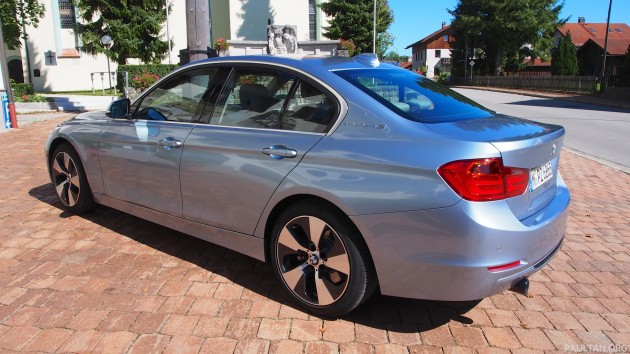
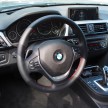
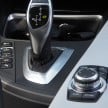
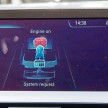
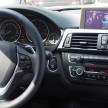
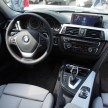
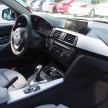
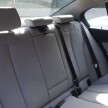
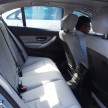
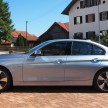
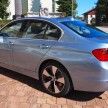

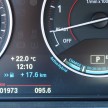
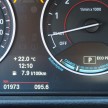
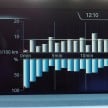
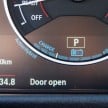
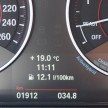

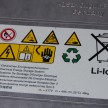

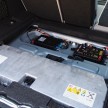
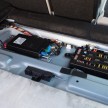
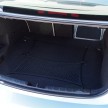
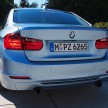
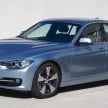
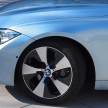
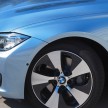

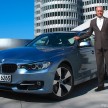
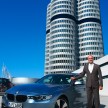
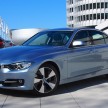
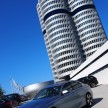
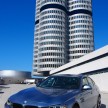

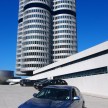
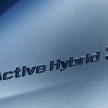
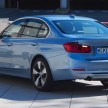
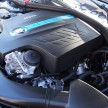
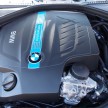
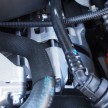
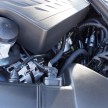
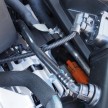
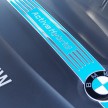
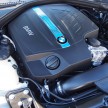
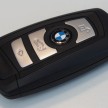



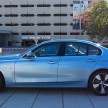
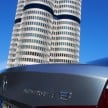
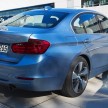
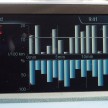
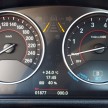
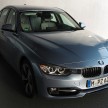
































Well Paul…
I’d say as long as those monkeys remain in power, whatever current car policy (whether u like it or not) will just stay THE SAME.
I pity BMW Msia in making pointless efforts to talk to them about incentives… sadly, the only “incentives” they car about is what ends up in their pocket….
Never for the greater good.
Vote smartly so that we can drive better and more environmental friendly cars than preve.
It takes two to lower the price of a car. The gov’t must give incentives for any car that goes green (no matter its a clean diesel, hybrid or EV) and the manufacturer must take in less profits for these cars in order for the public to accept the car.
We all know they’re earning a lot from the normal run of the mill models so why not take a step back and make the price attractive for green cars since this is relatively new tech and majority of the society is not willing to accept it?
Fantastic writeup Paul !
Its amazing to see how superior the technology
advancement of BMW and how the $$ invested in R&D
has produced wonders. I still remember the reason
BMW gave when it pulled out of F1 and now we see
the end result of their vision and aspirations.
Lucky u Paul cos back home we can only have wet dreams of owning these wonderful state of the art
cars.
i wonder if accident happened when someone hit the car back, will anyone get electric shocked by the 317v?
Nice to see you writing again Paul.
So if the fuel consumption improvement from the turbo inline-6 to the turbo 4-cylinder isn’t great, what about the new 3-cylinder models? A bigger electric motor combined with the new 3-cylinder turbo would be an interesting combination in my opinion.
i wonder how much it will be sold when arrive to Malaysia?
6 cylinder twin scroll turbo engine with 306hp and 400nm torque.
so what’s the point having a small electric motor?
in case push too hard run out of petrol, use electric motor to drive to nearest petrol station?
One more thing: The tech isn’t still young. It’s been around for ages but it still wasn’t good enguoh. It’s naive to think that all of a sudden the energy storage and reliability problem will be fixed in about 10 years. I would be happily surprised if an affordable, sophisticated every-day e-car goes into mass production in my lifetime, but I think our oil-based economy will take much longer to adapt.
Hybrid cars still new in Malaysia. It will be a trend in 2020. No more petrol cars at that time.
It’s not a new trend in Msia, I can already see bunch of hybrids on our roads already. It just sad that we can’t see more hybrid models due to the stupid policy which only give tax exemption to 2.0 liter capacity car. And yet with the tax exemption, we still have to pay more as the car dealers in Msia are just too greedy.
Good luck getting tax break when P1 and P2 releases their own hybrid cars
1) why a 3.0 cars put in a Hybrid. Hybrid owner is eco friendly and not POWER addict
2) If the G is really helping the environment, a better Diesel solve a lot, however, we know Petronas contribute 80Billion to our budget, you can forget G help the drivers, thats the same reason not building a public transport
A blue ocean strategy? BMW or any brand for that matter either fight in a battlefield already created, or create its own battle-ground to fight. Which brings me over to Honda’s CRZ… pretty IFFY if you asked me. I am sports, nono no I am hybrid… no no no! I am SPORTS! A bit like Smeagol eh?
Good news recently from what I’ve read. The govt is reducing excise duties by 50% for this model. BMW made a special presentation which managed to convince the govt. That means the ActiveHybrid presence will be felt in Malaysia